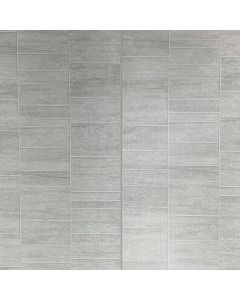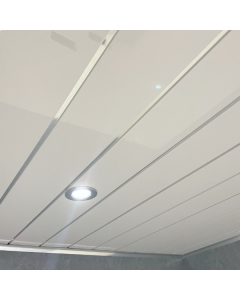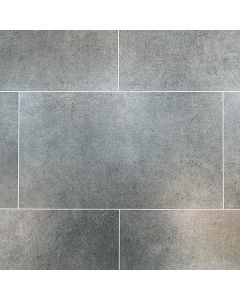How To Design A Bathroom
Whether you’re planning a furniture re-jig or renovating your bathroom entirely, striking a balance between style and functionality can be a challenge. And while interior designers will be happy to help, their services often come at a premium.
In this blog, we’ll delve into the details of functional, aesthetically pleasing bathroom design, so you can plan the layout in advance and achieve the bathroom of your dreams. Here are all of the things you need to consider when planning your bathroom.
Floorplan
It’s essential you know how much floor space you’re working with when designing your bathroom, and you can accomplish this yourself using graph paper. This will enable you to visualise where the furniture and essentials will be located, as well as establishing spatial requirements for the door and windows.
Furniture
Start with a list of essentials (toilet; bath, shower etc.), before considering which items you’ll include to put your own stamp on the design. This can be anything from smart bathroom features to a piece of wall art – your imagination is your only limitation.
Selecting a bathroom style
When you’ve settled on the furniture and fittings, it’s time to home in on your desired style. Broadly speaking, there are two main styles of bathroom: traditional and modern. The former prioritises classic period looks marked by decorative features and ornate lines, while contemporary designs pare down the décor to achieve clean lines and a minimalist aesthetic.
Heating
Of course, bathroom design isn’t all about aesthetics, and heating is one of the biggest practicalities to consider
Underfloor heating
Underfloor heating is ideal for bathrooms, particularly when space is scarce. And in addition to its space saving capacity, its location at the room’s lowest point utilises heat’s natural propensity to rise, making the system arguably more efficient than a single radiator. And it needn’t cost the earth either, as you can extend your existing radiator system to include an underfloor heating circuit.
Heated towel rails
Fuse style and functionality, tradition and modernity, with a traditional heated towel rail. Combining rapid heating functionality with traditional Victorian looks, it’s the perfect practical accessory for any bathroom inspired by yesteryear.
Baths
For those of you adopting a space-saving approach, corner baths are a great option as they fit flush in the corner of a room, freeing up valuable floorspace. Double-ended baths are a great option, too; with their centrally positioned taps, sharing becomes much more comfortable so they’re wonderful for bathing young families. But if your plan won’t accommodate both a bath and shower, don’t despair. Rather than choosing one over the other, consider installing a shower bath that’s wider at the tap end to allow for a more spacious shower area.
In terms of aesthetics, freestanding baths add a touch of luxury to any bathroom and come in both traditional and contemporary designs, so you’re guaranteed to find your dream centrepiece.
Whirlpool baths may not boast the same visual appeal as their freestanding cousins; they do, however, promote luxury, comfort and relaxation, and come in a vast array of shapes, sizes and styles.
Showers
Aside from style, there are some important logistical issues to consider before installing a new shower system.
Types of shower
Firstly, make sure the system you buy is compatible with the hot water system in your home. Electric showers excel here as they run from a cold-water supply and can be heated on demand. Mixer showers provide another useful option, as they use pre-heated water from a hot water tank or combi-boiler and can be fitted with a special pump to produce high-pressure flow.
For families, thermostatic mixers make perfect sense as they regulate water temperature – even when someone flushes the loo! And remember, if you’re considering splashing out on a shower with massage jets, make sure you select a shower head that can regulate the required water pressure.
Space saving showers
When it comes to space saving solutions, over-the-bath showers work well and allow parents to bathe the little ones. Ensuite showers, on the other hand, are ideal for couples and those looking to maximise their living space and privacy.
Shower enclosures
Maximise your shower space by choosing the perfect shower enclosure and tray for your bathroom. Square and rectangular enclosures are best fitted flush in the corner, while quadrant enclosures are great for opening up more floor space in spatially limited bathrooms.
Low profile shower trays fuse style and accessibility, complementing the contemporary look while making access easier for less able users.
Shower doors
Available in styles to suit all tastes, shower doors boost a bathroom’s aesthetic appeal while improving its functionality. Bi-fold and sliding doors are ideal when space is limited, for instance, while hinged doors, like low profile shower trays, improve shower access.
Creating a wet room
If your bathroom is especially small, or you’re planning a second bathroom, it’s worth considering a wet room. Essentially, a wet room is a bathroom in which the shower floor is flush with the rest of the room. And the benefits don’t stop there; they also enhance accessibility, broaden your design options, and can even add value to your home.
To create a wet room, you’ll need to ensure the room is fully tanked (waterproofed), while we also recommend installing a shower screen to contain splashes. If a wet room is beyond your budget, a generously sized walk-in shower presents a viable alternative.
Choosing a sink
There are four main types of sink and knowing the distinctions between them will help you select the ideal model for your bathroom.
Pedestal
Pedestal basins have neatly concealed pipework, making them ideal focal points in contemporary bathrooms.
Wall-mounted
Wall-mounted sinks free up floorspace and provide enhanced accessibility to less able users.
Counter-top
Mounted basins can be beautiful features in themselves, as well as offering a smart space saving solution for those with limited space.
Inset
Neatly housed in a bathroom surface, inset sinks provide a clean minimalist finish typically seen in Scandinavian bathrooms.
Taps
The style of tap you choose can have a huge impact on your bathroom’s overall look. If you’re aiming to roll back the years and embrace tradition, opt for classic features like cross head handles and Edwardian ceramic inserts finished with warm metallic hues like rose-gold and copper.
Contemporary taps, on the other hand, prioritise minimalism – think geometric styling and clean lines. Stainless steel and chrome taps create a sparkling clean look sure to upgrade any modern bathroom’s aesthetic, while matte black taps look luxurious against crisp white fittings and subway-tile style wall cladding.
Toilets
Traditional and period designs are beautifully complemented by high -level cistern toilets, with the cistern on display and the flush coming in lever or pulley form.
Contemporary bathroom designs profit from wall-mounted toilets, as they save space and embrace the minimalist look. Or strike a balance between tradition and modernity by opting for a classic close-couple toilet, whereby the cistern sits on top of the pan. These are available in both modern and classic designs. And if you’re simply replacing your current toilet, minimise the work and costs by selecting a new one with the same rough in (distance between the wall and the centre of the outlet pipe).
Storage

Fresh white towels stored in a smart storage solution.
Smart storage solutions are essential when designing a bathroom, as bulky items like towels and toilet paper can quickly eat up floorspace. Consider the following space saving tips to make the most out of your new bathroom.
Fitted storage
Fitted bathroom storage makes use of floor to ceiling space, allowing you to store the family’s essentials in clutter-swallowing cupboards and units.
Vanity units
Vanity units combine the sink with a storage cupboard, making practical use of what would otherwise be an overhanging, unused space. Available in a vast range of sizes and finishes, you’re sure to find your ideal model regardless of your bathroom’s size and style. If space your top concern – along with budget, it usually is – opt for a wall mounted version. Paired with a large mirror and carefully selected cladding, your bathroom will open up before your eyes.
Freestanding furniture
Freestanding furniture is perfect for housing your essentials and opens up limitless design possibilities. Upcycling, for example, allows you to breathe life into old furniture that’s been gathering dust in the attic, while charity shops are treasure troves for style spanning furniture.
Walling
When it comes to walling, you can choose between tiles and wall panels. Tiles are the traditional option but require grouting that can become mouldy and requires constant upkeep. Wall panels, on the other hand, are waterproof and fit together seamlessly, meaning wiping them down regularly is enough to keep them in perfect condition.
If your desired bathroom design features a centrepiece like a freestanding bath or vintage radiator, you’re going to want people to notice. For emphasis, apply a uniform cladding scheme to three walls, before adorning your feature wall with another colour or design.
Lighting
Bathroom lighting presents an overlooked design element that can create the perfect ambience for bathing, as well as serving as a functional space to host those manic morning routines.
Multiple light sources
Regardless of your bathroom’s size, having multiple light sources will enhance the design. Combining mood lighting, accent spotlights and task lights will establish a scheme to suit all needs; providing practical illumination for daily tasks like shaving, and a serene ambient glow for evening bathing.
See below for our handy breakdown of bathroom lighting.
Task lights
Task lights illuminate areas that require high visibility, such as mirrors and the surrounding sink area. By strategically placing lights in these spots, you’ll prevent eye strain while enhancing tasks that require precision like applying makeup and shaving. Mount your task lights either side of your bathroom mirror to avoid the interference of shadows.
Mood lights
Mood lighting combines a warm glow with a comfortable brightness level – ideal for bathing relaxation and creating a calm ambience. To make the most of mood lights, position them around the room – as opposed to the centre – to avoid shadows and highlight statement wall cladding and furniture. Never fit mood lights above a mirror or vanity unit as they’ll cast strong light and shadows onto your face, effectively defeating the purpose.
Feature lights
Feature lights are ideal for highlighting design details and creating an atmosphere. Use LED light strips to emphasise and draw attention to your bathroom’s focal points.
Night lights
Night lights are ideal for families with young children and people with mobility issues as they come on automatically courtesy of a presence detector. Situate LED strip lighting under a vanity unit or bath panel to provide muted illumination that won’t awaken the rest of the family!






























